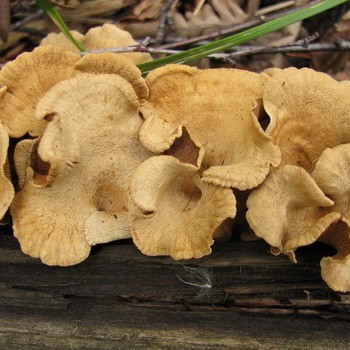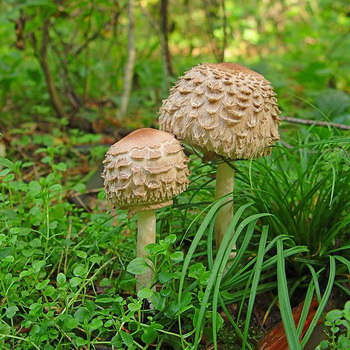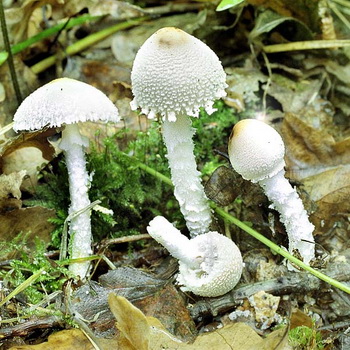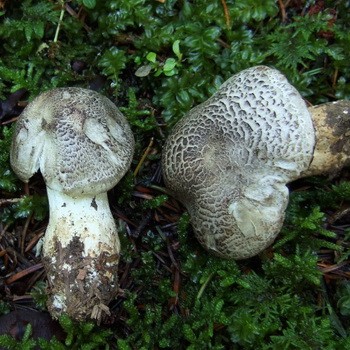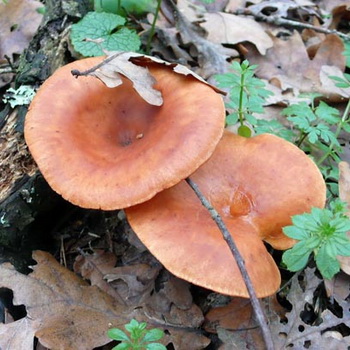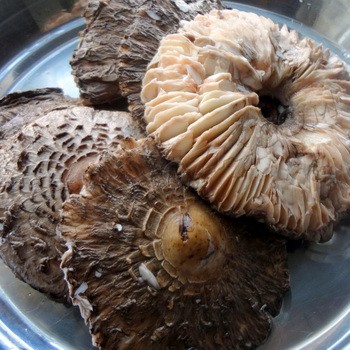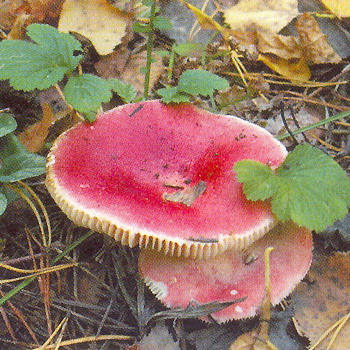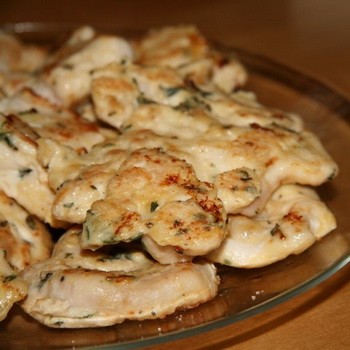Inedible doubles: poisonous mushrooms umbrellas
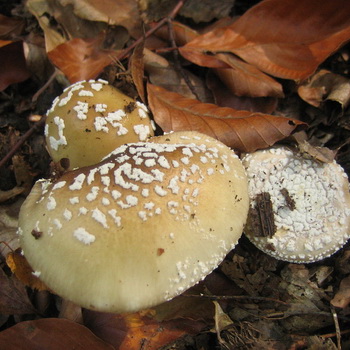
The mushroom got its name for its strong external resemblance to an umbrella. First, the cap on the leg looks like a closed umbrella or dome, and soon opens and becomes a copy of the umbrella. It is important to remember that almost all edible mushrooms have false or poisonous counterparts. Umbrellas, too, are no exception and have their inedible "brothers." And so mushroom pickers need to adhere to certain rules: Do not pick mushrooms that are in doubt.
Edible mushroom is quite realistic to distinguish from a poisonous umbrella. And if you, having arrived in the forest, are not aware of how and where to collect umbrellas, then you do not need to knock them down with your feet, mistaking them for poisonous mushrooms. Perhaps those who come after you will be happy with such a harvest.
We offer you to familiarize yourself with the description and photos of poisonous umbrellas. There are 4 types of them in our region: comb-shaped umbrella, chestnut umbrella, brown-red and fleshy-red umbrella. However, only the first two species are considered the most dangerous.
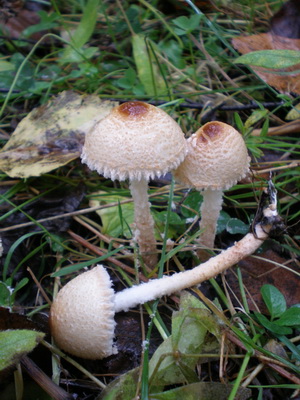
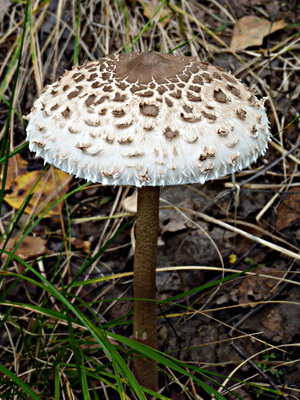
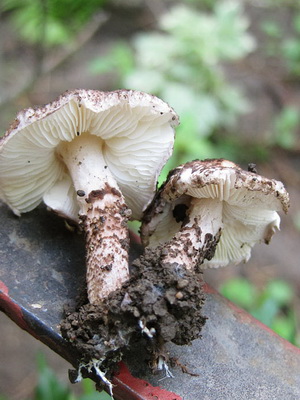
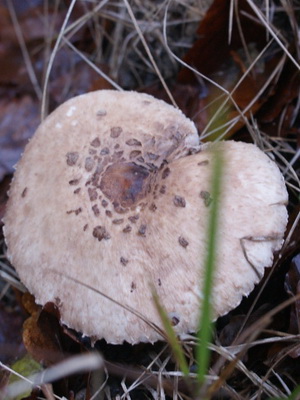
Content
- Poison mushroom comb umbrella
- How to distinguish an umbrella from a lepiot poisonous mushroom similar to it
- How to distinguish edible mushroom umbrella from poisonous grebe and fly agaric (with video)
- How to distinguish an edible umbrella from an inedible purple mushroom
- Mushroom umbrella blushing: poisonous or edible?
- Inedible umbrella white: what a poisonous mushroom looks like
Poison mushroom comb umbrella
The Latin name for the comb umbrella: Lepiota cristata;
Family: champignon;
Hat: diameter from 2 to 5 cm, similar to a bell in young individuals and extended in adult specimens. The color is red-brown, on the surface are pointed yellow-orange scales.
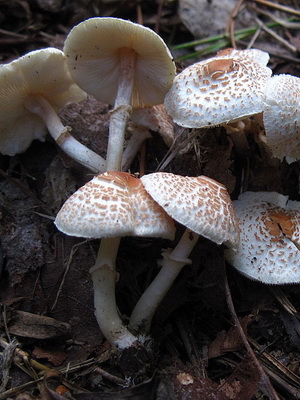
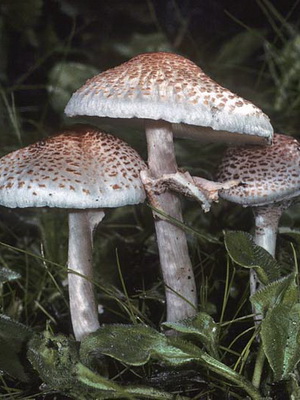
Leg: very thin, empty in the middle, height from 7 to 10 cm, in the diameter of 0.5 cm in the shape of a cylinder, with the expansion of the base. Color from yellowish to cream, with a white ring or pink. The ring is quite narrow and disappears almost immediately.
Pulp: white pulp with fibrous impregnations, with a sharp unpleasant odor.
Edibility: poisonous, completely unfit for food;
Spread: prefers the northern regions of the country with a temperate climate.
How to distinguish an umbrella from a lepiot poisonous mushroom similar to it
Another poisonous mushroom that looks like an umbrella is a chestnut lepiota.
Latin name: Lepiota castanea;
Family: champignon;
Hat: diameter from 2 to 4 cm, has a red or brown color. The hat is ovoid only in young mushrooms, in adult specimens - open. Further, the peel on the hat begins to crack on small hard chestnut-colored flakes. The plates under the hat eventually turn yellow;
Pulp: it has a reddish or brownish tint, especially when broken or cut, it has an unpleasant smell and is very fragile when touched;
Leg: has a cylindrical shape that expands and lowers to the base. The ring on the leg is white, but quickly disappears with age;
Edibility: the mushroom is very poisonous; when eaten, fatal outcomes most often occur;
Spread: grows in regions with moderate climatic conditions. Often can be found in Eastern and Western Siberia, as well as in European countries.
It is worth saying that the doubles of the umbrella mushrooms are poisonous and very dangerous. Therefore, if you do not know exactly which mushroom is in front of you, do not touch it.
How to distinguish an umbrella mushroom from a lepiot - a poisonous mushroom? The leg of a lepiot is poisonous in height up to 12 cm, with a thickness of up to 1.2 cm. It resembles a cylinder in shape, inside it is hollow, slightly curved, smooth, white. After the ring on the leg, the color changes and becomes yellowish or brown. If you touch the leg, it becomes brown. Look at the photo how to distinguish an umbrella mushroom from a poisonous double:
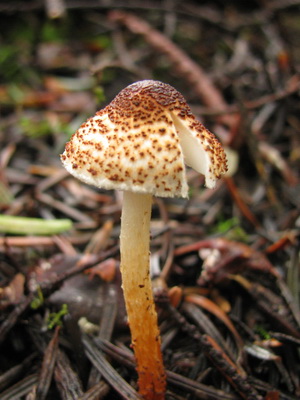
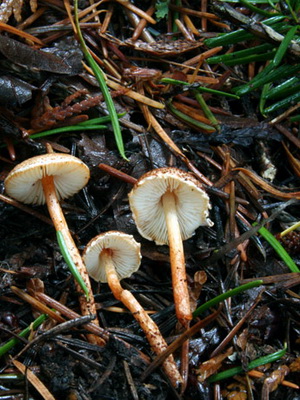
How to distinguish edible mushroom umbrella from poisonous grebe and fly agaric (with video)
To know the difference between edible and poisonous mushrooms, umbrellas, also watch the video. It will help you more accurately identify existing differences.
For example, how to distinguish mushroom umbrella from fly agaric? Amanita has scales on a hat, but they are rare. Usually the caps on this mushroom are almost smooth, with a small amount of white scales. The umbrella is gray or brown in color with large white or gray scales. The leg of the umbrella is framed by three layers of a white ring, which easily moves down.
Many mushroom pickers confuse umbrellas with white grebes and get poisoning. Therefore, the question arises, how to distinguish a mushroom umbrella from a toadstool?
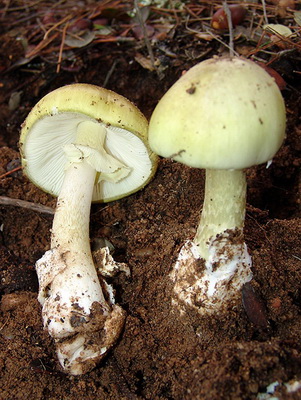
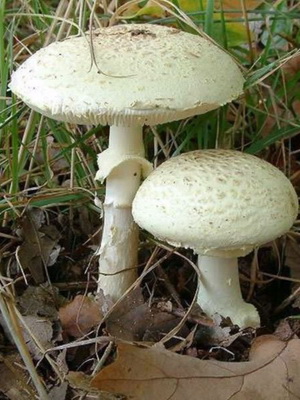
White grebe - a very toxic mushroom, and in case of accidental use, death occurs in 90% of cases. The whole mushroom has a grayish or off-white hue. His hat has no scales, but is covered with flakes. The pulp of a white grebe has a rather unpleasant chlorine smell. There is no ring on the leg, it disappears very early, instead of it fragments of fiber remain.
How to distinguish an edible umbrella from an inedible purple mushroom
There is another false umbrella, which can also be confused. How to distinguish an edible mushroom umbrella from an inedible mushroom - a purple umbrella? The inedible purple mushroom has the corresponding color, bitter taste and unpleasant odor. Although this fruiting body is not poisonous, it is not recommended to eat it because of strong bitterness. We offer you to see a visual photo of an inedible umbrella mushroom:
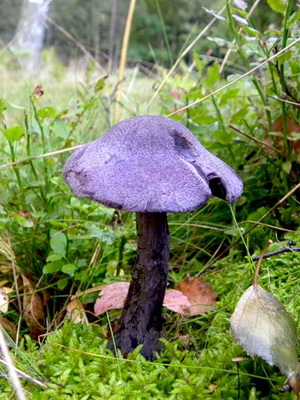
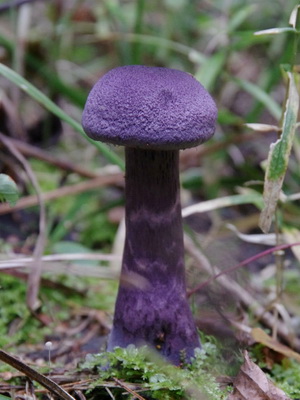
It is worth noting that mushroom umbrellas are very common among representatives of the mushroom kingdom. Since they grow on decaying organic residues, on rotting plants, they are also called saprophytes. Sometimes umbrellas can reach very large sizes, for example, a hat in diameter can be more than 23 cm and a leg height up to 30 cm. Mushrooms umbrellas grow in circles, forming rings, popularly called "witch circles". In such circles, umbrellas can grow up to several tens.
Mushroom umbrella blushing: poisonous or edible?
Some mushroom pickers are sure that the reddening fungus is considered poisonous and therefore does not collect it. We hasten to reassure them, this mushroom is edible and very tasty.
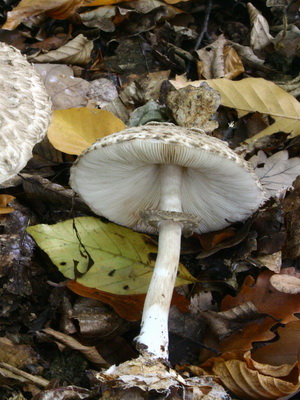
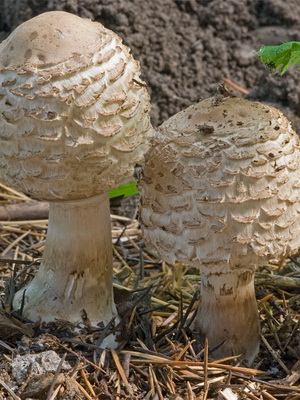
Latin name: Macrolepiota rhacodes;
Family: champignon;
Hat: beige or gray with fibrous-looking scales. Young mushrooms resemble a small chicken egg, and then their hat spreads and resembles a bell. With age, it becomes completely flat with slightly twisted edges;
Leg: smooth, white or light brown. The shape is cylindrical, tapering at the top and easily detachable from the cap;
Records: white or cream color, redden when pressed;
Pulp: white, very brittle, fibrous. When cut, it becomes a reddish-brown hue, while it has a pleasant smell;
Edibility: edible mushroom;
Spread: deciduous and coniferous forests, acacia thickets. In addition to Russia, it can be found in Europe, Asia, Africa, Australia, America.
Scientists warn that an umbrella blushing mushroom, even though edible, can cause severe allergic reactions in allergy sufferers.
Inedible umbrella white: what a poisonous mushroom looks like
Another umbrella that mushroom pickers consider to be inedible is the white mushroom umbrella.
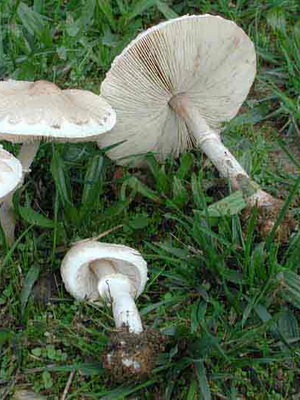
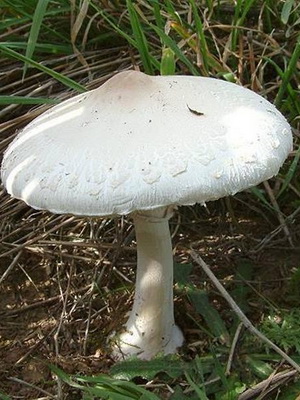
Latin name: Macrolepiota excoriata;
Family: Champignon;
Synonyms: white umbrella, field umbrella, lepiot white;
Hat: gray-white, with a diameter of up to 13 cm, with scales that are easily behind. Young mushrooms look like a chicken egg, then they become flat and have a pronounced brown tubercle in the center of the cap. Whitish fibrous joints are visible along the edges of the cap;
Leg: height can vary from 5 to 14 cm. Inside is almost empty, has a cylindrical shape, slightly curved. The leg below the ring has a dark color, when touched it turns brown;
Pulp: white, smells good, has a tart taste, does not undergo changes at the cut;
Records: quite thick, free, with smooth edges. In young specimens, the plates are white, in old ones - beige or brown;
Spread: found throughout Russia, Ukraine, Belarus and many European countries. It grows in the steppes, forests, pastures, especially where there are humus soils.
Now, after reading the description of inedible mushrooms, you know what a poisonous mushroom looks like an umbrella. Therefore, going to the forest for mushrooms, remember this information and photos of poisonous umbrellas well so as not to endanger your life.
And one more important rule for mushroom pickers: do not collect umbrellas near motorways, industrial plants and landfills. Even if the mushrooms are edible, but grow in such places, they absorb poisons that are harmful to the human body, and can cause poisoning.
